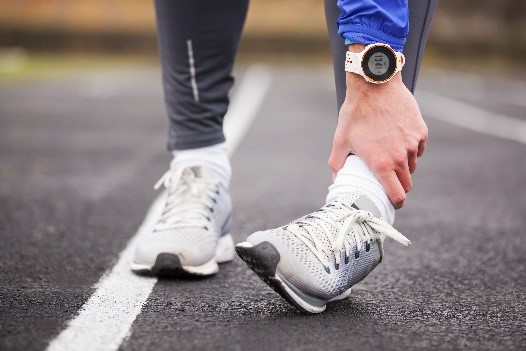It’s not just an ankle sprain!
How often have you heard ‘it’s just an ankle sprain, it’s fine nothing to worry about’?
Have you ever heard ‘oh it’s just an ACL sprain, don’t worry about it’? Both are ligament injuries that play significant roles in joint stability.
Lateral ankle sprains are one of the most common sporting injuries caused by rapid turning in and down (plantar flexion and inversion) of the ankle. This can cause displacement of the ankle joint and result in stretching, tearing or even rupture of the lateral ankle ligaments; most commonly the Anterior Talofibular ligament (ATFL). Ankle sprains are often dismissed quickly as inconsequential or minor with more than 50% not seeking treatment. While many do not lead to ongoing issues, rates of reinjury due to inadequate rehab and early return to sport are high, and over one third can lead to chronic ankle instability. Although uncommon, it can be important to screen for associated injuries such as fractures, syndesmosis injuries (joint in between two shin bones), or cartilage lesions which can require immobilisation and different management pathways.
As noted above, recurrent lateral ankle sprains are common and can lead to ongoing feelings of instability, fear of activity and persistent symptoms such as pain and reduced range of motion. Engaging in rehab post ankle sprain to regain range of motion, proprioception or awareness, strength, and improve confidence prior to returning to sport is important, and can improve performance and the risk of recurrence.
Knowing when to return to sport following an ankle sprain can be tricky. In a recent “consensus statement”, world experts highlighted 5 key areas known as “the PAASS framework” that are important to consider before returning to sport:
- Pain
- Ankle Impairments
- Athlete Perception
- Sensorimotor Control
- Sport and functional performance.
For more information on what these include and how to address them, check out our previous blog for a breakdown of the framework:
So please don’t say ‘it’s just an ankle sprain’, come to see us for an assessment and give your ankle some love!
Our modern clinic is located at 656 Bridge Rd, Richmond.
Reference
Lan, T., McCarthy, H. S., Hulme, C. H., Wright, K. T., & Makwana, N. (2021). The management of talar osteochondral lesions – Current concepts. Journal of arthroscopy and joint surgery, 8(3), 231–237. https://doi.org/10.1016/j.jajs.2021.04.002
Smith, M. D., Vicenzino, B., Bahr, R., Bandholm, T., Cooke, R., Mendonça, L. M., Fourchet, F., Glasgow, P., Gribble, P. A., Herrington, L., Hiller, C. E., Lee, S. Y., Macaluso, A., Meeusen, R., Owoeye, O. B. A., Reid, D., Tassignon, B., Terada, M., Thorborg, K., Verhagen, E., … Delahunt, E. (2021). Return to sport decisions after an acute lateral ankle sprain injury: introducing the PAASS framework-an international multidisciplinary consensus. British journal of sports medicine, 55(22), 1270–1276. https://doi.org/10.1136/bjsports-2021-104087
Thompson, C., Schabrun, S., Romero, R., Bialocerkowski, A., van Dieen, J., & Marshall, P. (2018). Factors Contributing to Chronic Ankle Instability: A Systematic Review and Meta-Analysis of Systematic Reviews. Sports Medicine, 48(1), 189–205. https://doi.org/10.1007/s40279-017-0781-4


